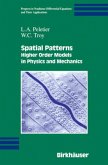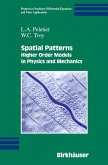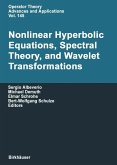The study of disorder has generated enormous research activity in mathematics and physics. Over the past 15 years various aspects of the subject have changed a number of paradigms and have inspired the discovery of deep mathematical techniques to deal with complex problems arising from the effects of disorder. One important effect is a phenomenon called localization, which describes the very strange behavior of waves in random media---the fact that waves, instead of traveling through space as they do in ordered environments, stay in a confined region (caught by disorder). To date, there is no treatment of this subject in monograph or textbook form. This book fills that gap.
Caught by Disorder presents:
an introduction to disorder that can be grasped by graduate students in a hands-on way
a concise, mathematically rigorous examination of some particular models of disordered systems
a detailed application of the localization phenomenon, worked out in two typical model classes that keep the technicalities at a reasonable level
a thorough examination of new mathematical machinery, in particular, the method of multiscale analysis
a number of key unsolved problems
an appendix containing the prerequisites of operator theory, as well as other proofs
examples, illustrations, comprehensive bibliography, author and keyword index
Mathematical background for this book requires only a knowledge of partial differential equations, functional analysis---mainly operator theory and spectral theory---and elementary probability theory. The work is an excellent text for a graduate course or seminar in mathematical physics or serves as a standard reference for specialists.
Caught by Disorder presents:
an introduction to disorder that can be grasped by graduate students in a hands-on way
a concise, mathematically rigorous examination of some particular models of disordered systems
a detailed application of the localization phenomenon, worked out in two typical model classes that keep the technicalities at a reasonable level
a thorough examination of new mathematical machinery, in particular, the method of multiscale analysis
a number of key unsolved problems
an appendix containing the prerequisites of operator theory, as well as other proofs
examples, illustrations, comprehensive bibliography, author and keyword index
Mathematical background for this book requires only a knowledge of partial differential equations, functional analysis---mainly operator theory and spectral theory---and elementary probability theory. The work is an excellent text for a graduate course or seminar in mathematical physics or serves as a standard reference for specialists.
"The main purpose of this book is to present, in quite an accessible way, the essence of multiscale analysis, a technique needed in proving Anderson localization, or exponential localization, for random Schrodinger-like operators acting in $L^2(bold R^d)$. The treatise consists of four chapters, which are well arranged so as to clarify the logical structure of this hard technique. In the first chapter, after a brief introduction to the subject of disordered systems, the author summarizes some general facts on ergodic families of self-adjoint operators, such as the almost sure constancy of the spectrum. A convenient criterion is also given for the measurability of random operators obtained through closed forms. Then the author describes precisely two basic models to be treated in the sequel, which he names (P+A) and (DIV) respectively...." (Nariyuki Minami, Mathematical Reviews)








